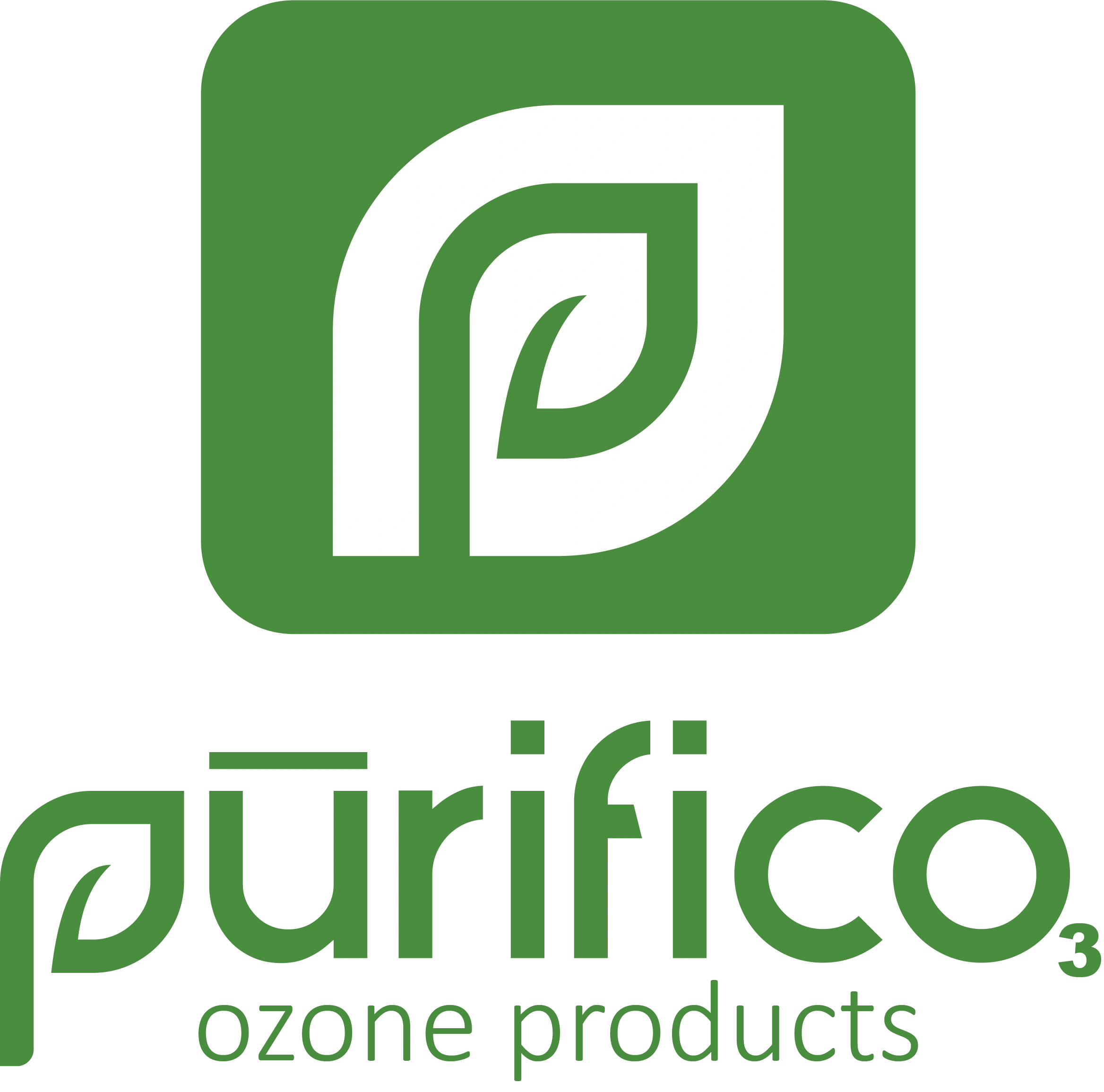When it comes to water disinfection, choosing the right method is critical for ensuring safety, efficiency, and environmental sustainability. Among the various disinfectants available, ozone has emerged as a superior option compared to traditional methods like chlorine, chloramine, and UV radiation.
This article will explore the reasons why ozone outperforms other disinfectants and why it is increasingly favored across multiple industries.
1. Unmatched Oxidative Power
Ozone (O₃) is a powerful oxidant with an oxidation potential of 2.07 volts, which is higher than that of chlorine (1.36 volts) and hydrogen peroxide (1.78 volts). This high oxidative power allows ozone to rapidly and effectively break down a wide range of contaminants, including organic matter, bacteria, viruses, and other pathogens.
Ozone’s superior oxidizing capability means it can achieve the same disinfection levels as other methods with lower dosages and shorter contact times. By increasing dosage further, ozone is capable of providing disinfection levels that simply aren’t practical or possible using other methods.
2. Broad-Spectrum Efficacy
Ozone’s disinfection effectiveness spans a broad spectrum of microorganisms, including bacteria, viruses, fungi, protozoa, and even chlorine-resistant pathogens like Cryptosporidium and Giardia. Ozone works by attacking the cell membranes and genetic material of these organisms, leading to their rapid destruction.
Unlike UV radiation, which only disinfects where light reaches, and chlorine, which can be less effective against certain organisms, ozone offers comprehensive coverage that ensures water safety across a wider range of conditions.
3. No Harmful Residues
One of ozone’s most significant advantages over other chemical disinfectants is that it breaks down into oxygen, leaving no harmful residues. In most situations, the high dissolved oxygen levels that result are actually beneficial. In contrast, chemicals like chlorine and chloramine leave residues, such as chloride, and can react with contaminants to form harmful disinfection by-products (DBPs) like trihalomethanes (THMs) and haloacetic acids (HAAs), posing risks to both human health and the environment.
These residues and by-products can pose risks like cancer and other health issues, making ozone a safer choice for both potable and non-potable water applications.
4. Enhanced Water Quality
Ozone not only disinfects but also enhances water quality by oxidizing and removing impurities like iron, manganese, and sulfur, which cause taste, odor, and color problems. It breaks down organic and inorganic molecules that contribute to cloudiness and unpleasant smells or tastes. After eliminating these contaminants, ozone helps clump together remaining particles, making them easier to filter out. The result is crystal-clear water that’s both safe and visually appealing.
This dual action of disinfection and purification makes ozone ideal for applications where high water quality is essential, such as in agriculture, drinking water treatment, food processing, or ponds and lakes.
5. Faster Disinfection with Lower CT Values
The concentration-time (CT) value is a measure of a disinfectant’s effectiveness, calculated as the concentration of the disinfectant multiplied by the contact time required to achieve a certain level of pathogen inactivation. Ozone’s CT values for various pathogens are significantly lower than those of chlorine and chloramine.
For example, the CT value required to inactivate 99.99% of viruses is 0.5 mg*min/L for ozone, compared to 12.5 mg*min/L for chlorine dioxide and even higher for chloramine. In other words, ozone achieves more with less. This lower CT value means ozone provides fast, effective disinfection with less chemical input, lower power usage, and smaller pumps, resulting in cost savings on multiple levels.
6. On-Site Generation Reduces Chemical Handling Risks
Ozone is generated on-site using either corona discharge or UV light, eliminating the need for the transportation, storage, and handling of hazardous chemicals. This not only enhances operational safety but also reduces logistical challenges and associated costs.
Chlorine and other chemicals, on the other hand, require careful handling and storage protocols to prevent leaks, spills, and other safety hazards. The on-site generation of ozone offers a streamlined and safer disinfection process.
7. Environmentally Friendly
Ozone’s environmental benefits are substantial. Because it breaks down into oxygen, it doesn’t contribute to chemical pollution in the environment. In contrast, chlorine and its derivatives leave chemical residues and react with various contaminants to produce toxic disinfection by-products that affect aquatic ecosystems.
Ozone’s clean breakdown products make it ideal for applications that prioritize environmental stewardship, such as aquaculture, water recycling, and wastewater treatment.
8. Effective in different pH and Temperature Levels
Many chemical disinfectants, such as chlorine, are sensitive to pH levels, with their efficacy decreasing significantly in higher pH water. Ozone, however, remains effective across a broader pH range, making it more versatile for different water types and treatment conditions.
One of the major pain points with traditional disinfectants is that they are less effective in warm water, creating problems in summertime or warm climates. In contrast, ozone is generally equally or more effective in warmer water temperatures.
This stability ensures that ozone can provide consistent disinfection performance regardless of fluctuations in water chemistry and weather, making it robust solution for disinfection
9. Reduces the Need for Secondary Disinfectants
With traditional disinfection methods, multiple chemicals are often required to achieve comprehensive water treatment. For example, chlorine might be used for primary disinfection, while a secondary treatment might be needed to address specific contaminants, residues or control pH.
Ozone’s powerful and broad-spectrum disinfection capabilities reduce or eliminate the need for additional chemicals, streamlining the water treatment process and reducing overall costs.
10. Cost-Effective in the Long Run
While the initial cost of ozone generation equipment can be higher than other disinfection methods, the long-term operational savings are substantial. Ozone systems have low operating costs, require minimal maintenance, and involve fewer regulatory concerns related to chemical handling and disposal.
Most importantly, ozone provides the highest water quality, which can positively impact your bottom line. These long-term savings, along with ozone’s superior performance and environmental advantages, make it a cost-effective choice for many applications.
Conclusion
Ozone stands out as a superior disinfectant for water treatment due to its unmatched oxidative power, broad-spectrum efficacy, and environmental benefits. It provides faster and more thorough disinfection than traditional methods, without the drawbacks of harmful residues or complex chemical management.
As industries and municipalities continue to prioritize safety, efficiency, and sustainability, ozone is poised to play an increasingly prominent role in the future of water treatment. By choosing ozone, operators can achieve reliable, high-quality disinfection while reducing their environmental footprint and long-term operational costs.


